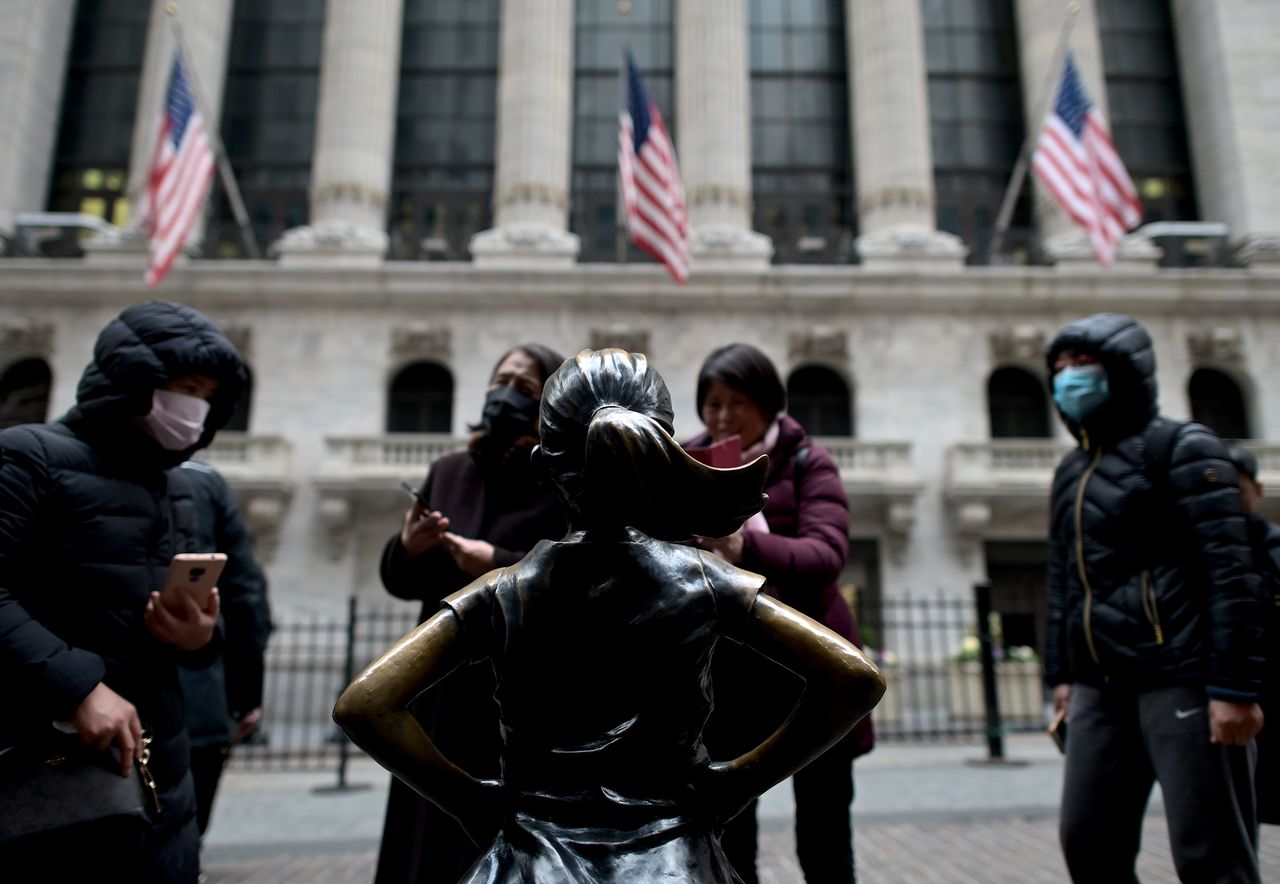Bond traders dare to consider financial crisis-era interest rates after yields drop
Sign up now: Get ST's newsletters delivered to your inbox

Chinese tourists with masks stand in front of the New York Stock Exchange on Feb 3, 2020.
PHOTO: AFP
Follow topic:
NEW YORK (BLOOMBERG) - Mounting fear about the global impact of the coronavirus has traders bracing for a return to financial-crisis era interest rates.
Short-term yields are suffering one of their most precipitous declines in the past decade, with the rate on two-year US notes plunging more than 20 basis points since Feb 21. That's one of the biggest weekly drops since 2008, when the global financial system seized up and two-year yields sank 51 basis points. Traders, meanwhile, are now pricing in around three quarters of a point of Federal Reserve easing this year, and some are hedging against the prospect that Chairman Jerome Powell might need to take the US benchmark back toward zero.
Those moves have markets on edge, with traders describing scenes during the early New York session that ranged from general mayhem to calm resignation that the US has finally joined the global low-rate club. The spread of coronavirus has driven investors into the safety of US government debt all week, triggering a series of headline-worthy milestones as stocks slumped and rates on 10- and 30-year Treasuries sank to unprecedented levels.
Treasuries are "pricing in a real recession, not a temporary access-to-credit issue," said Chris Bury, principal at Minimax Capital and former head of rates trading at Jefferies. "The market has been conditioned to a Fed reaction function that will provide easier credit. This time around, that doesn't solve the problem."
On the short-end of the curve, the decline reflects growing conviction that the Fed will be forced to act to blunt the economic impact from the virus. The illness is disrupting the global supply chain and cratering consumer demand in some the world's biggest economies.
Overnight interest rates on Fed-dated meetings tumbled on Thursday (Feb 28) as anxiety over the spreading coronavirus permeated markets and a 25 basis-point cut is now fully priced in for as soon as April. There was also demand for a position in eurodollar options that targets a scenario of the fed funds rates falling to around zero by the middle of the year; that would imply three consecutive 50 basis-point cuts at every Fed meeting through June.
Policy makers last cut their target range in October, when they lowered their target range to between 1.50 per cent to 1.75 per cent; the rate has effectively been at 1.58 per cent the past few days.
Meanwhile, yields on two-year Treasuries, which are highly sensitive to Fed easing, sank to as low as 1.03 per cent on Thursday. The all-time low was 0.14 per cent, set in September 2011.
"Market participants seek liquidity when we're having aneurysms in the risk markets and nominal Treasuries are the most liquid product on the planet," said Tim Magnusson at Garda Capital. "Is it a bargain to buy them here? No, but if you want to be defensive the yield on the Treasury doesn't matter as much as capital preservation."
For longer-term Treasuries that find their yields at record lows, traders are focusing on round-number targets for where the rally may stall as investors opt to take profits. For the 10-year yield that's 1.25 per cent; for the 30-year, 1.75 per cent. Both levels were breached Thursday, and then yields quickly rebounded.

